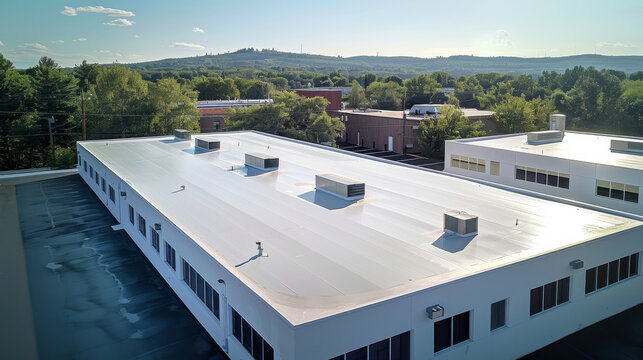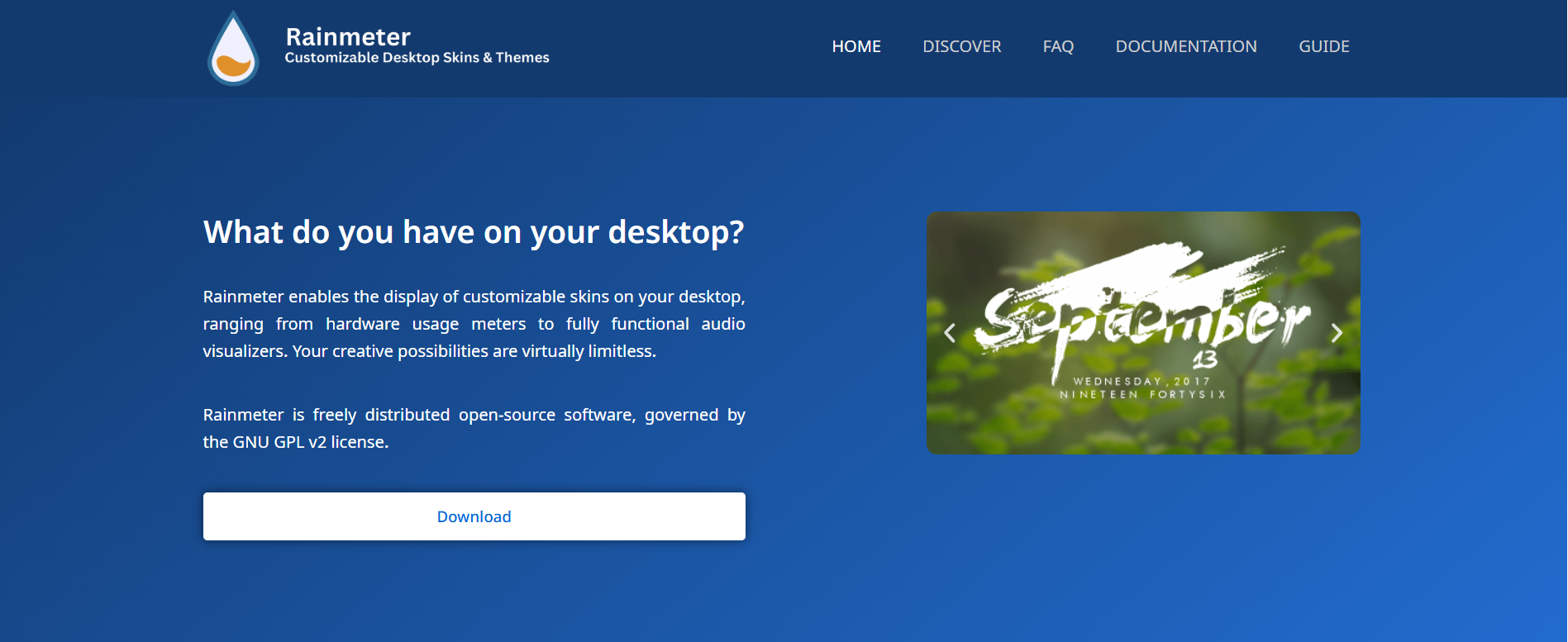Is a Flat Roof Right for Your Calgary Home? Pros and Cons

A flat roof refers to low-slope roofing systems constructed to withstand our freeze-thaw cycles, hail, and chinooks.
Angel’s Roofing installs and repairs SBS torch-on, TPO, and EPDM roofing systems with CSA compliance and clean drainage design. Crews have over 25 years of experience on commercial blocks and infill homes throughout YYC.
Look out for snug seams, powerful insulation, and secure job sites. To reduce energy loss and prevent ponding, we construct intelligent taper plans.
See more or get a free estimate today!
The Calgary Climate Challenge
Calgary’s flat roofs endure brutal winters, fierce winds, hail and extreme temperature changes. Chinooks provide quick freeze-thaw cycles. Heavy snow, summer UV, and sudden storms stress membranes, seams and drains. Energy loads spike during cold snaps and sunny heatwaves, so decisions must strike a balance between climate control and efficiency.
Extreme Weather Risks for Flat Roofs in Calgary
A lot of snow adds weight and ice dams that shove meltwater under laps. Strong winds can lift edges and peel membranes that aren’t well-fixed. Hail crushes granules and bruises insulation, potentially igniting leaks months later. Fast switches from -30C to thaw stress seams and flashings.
Summer UV bakes out exposed surfaces, and bright sun contributes solar heat gain. These forces exploit weak points: parapet joints, rooftop units, and clogged drains.
Materials and Installation Built for Winters
Opt for state-of-the-art systems with proven cold-weather efficiency. SBS-modified bitumen with heat-welded seams withstands cracking and wind uplift. High-end single-ply (PVC or thicker TPO with scrim reinforcement) resists UV and hail far better than bargain sheets.
Closed-cell polyiso or dual-density cover boards offer impact resistance and help maintain fasteners’ tightness. Use wind-rated edge metal and fully adhered or mechanically fastened assemblies tested for Prairie gusts. With an adequate slope to drains (minimum 2%) and oversized scuppers, they reduce ponding and ice accumulation.
Inspections and Planned Maintenance
Plan spring and fall inspections and checks following significant wind or hail. Search for seam lifts, punctures, blisters and loose edge metal. Clear your drains, scuppers and gutters before the freeze.
Map hail hits, core wet spots, and fix early to prevent trapped moisture from recirculating and causing further damage. Maintain a snow management plan: mark drains, establish safe shovel paths, and avoid piling snow near parapets.
Waterproofing and Insulation Priorities
Select membranes with high puncture ratings and welded seams for reliable waterproofing. Add vapour barriers where interior humidity is high. Boost heat retention with a higher R-value for reduced heat loss and less dammed-up ice.
Use light-colored or reflective surfacing to reduce summer cooling loads. Tie in neatly at walls, curbs, and skylights to stop wind-driven rain.
Best Flat Roof Materials
Calgary flat roofs deal with long cold snaps, huge temperature swings, summer hail and heavy snow loads. Material selection should optimize strength, flexibility, UV resistance and energy performance, without driving up life-cycle cost.
- EPDM: rubber single-ply, strong in cold, seams taped, can be ballasted with gravel for UV and wind uplift; ideal for expansive footprints; average price $6–$8 per sq ft; lifespan of approximately 25–30 years.
- TPO: heat-welded single-ply, bright white surface for reflectivity, solid UV resistance, ideal for commercial retrofits, costs $4–$7 per sq ft, life 25–30 years.
- PVC: heat-welded single-ply, chemical-resistant, high reflectance; employed on restaurant and lab roofs; price close to high end of single-ply spectrum; life 25–30 years.
- SBS modified bitumen: asphalt with polymers, installed torch-applied or cold-applied in 2–3 plies; excellent crack resistance in freeze–thaw tough for busy roofs; price $5–$7 a square foot; lifespan 25–30 years.
- Metal (steel): used for flat-to-low-slope roofs with correct detailing and minimum pitch; resists hail and snow; can last more than 40 years; price $8–$16 per sq.
Select membranes with excellent UV ratings and cold-flex capabilities. Thanks to Calgary’s freeze–thaw cycle, flexible sheets like EPDM, TPO, and SBS manage movement more effectively than rigid systems.
For snow, steel support decks and sturdy fastening avoid sag and uplift; steel is prized for load capacity and longevity. Modern single-ply and SBS systems minimize seams, expedite installs and decrease maintenance.
Heat-welded laps (TPO/PVC) provide tight seams that resist ponding and wind. Multi-ply SBS ensures redundancy for foot traffic and rooftop equipment. The majority of systems provide convenient access for HVAC, solar and satellite mounts, reducing service time.
Insulation and coatings are essential. Sprinkle in some high-R polyiso or mineral wool for winter heat loss reduction and ice dam risk mitigation, and achieve at least code-plus R-values to keep those winter gas bills in check.
Bright, reflective membranes or acrylic/silicone coatings reduce summer heat gain and UV aging, reducing cooling loads. Refer to the manufacturer’s specifications for slope-to-drain, perimeter terminations, and Calgary wind/snow design.
Some membranes require ballast, while others require a minimum pitch and specific fastener configurations.
Calgary Flat Roof Installation
Calgary flat roofs need to deal with freeze-thaw cycles, chinook swings, and heavy snow. The right design and installation decisions minimize leaks, ice dams, and premature wear.
What the Service Includes and Why It Matters
Flat roof installation includes deck prep, vapour control, insulation, membrane, flashing, and drainage. In Calgary, SBS-modified bitumen, TPO, and EPDM are typical. SBS fits cold snaps and roof traffic, TPO supplies high reflectance in summer heat, and EPDM manages expansive decks with fewer seams.
With proper detailing at curbs, parapets, and penetrations, it prevents wind-driven meltwater from backing up during chinooks.
Step-by-Step Process: How We Install
- Assess structure, snow loads, and code needs.
- Remove old layers; repair deck.
- Install a vapour barrier according to the humidity class.
- Install rigid insulation (typically polyiso), stagger the joints, and achieve the desired R-values.
- Create tapered insulation for slope (min 2% fall).
- Adhere base ply membrane (SBS, TPO, or EPDM) using approved installation methods.
- Flash walls, curbs, and edges with compatible materials.
- Set drains, scuppers, and overflows; seal all terminations.
- Add walk pads near service areas.
- Quality check, water test, document for warranty.
Drainage Design: Prevent Pooling and Flooding
Calgary roofs require defined flow paths to interior drains or scuppers. Locate drains in low spots, incorporate secondary overflows to indicate clogs before building entry, and size leaders for peak melt and rain-on-snow events.
Employ tapered insulation to shed water off seams and around HVAC curbs. Allow at least a 2% slope, with a steeper slope adjacent to long runs or shaded areas where ice persists.
Why Hire Certified Flat Roof Specialists
Experienced crews adhere to Calgary bylaws, CSA standards, and manufacturer specifications. Certified installers guarantee that heat-welded seams are sound, fasteners meet wind uplift ratings, and fire and safety protocols.
This saves warranties and decreases life-cycle cost.
Post-Install Inspection and Warranty Compliance
Plan for a third-party or manufacturer inspection post-installation. Confirm membrane thickness, seams, terminations, and drainage tests: document as-builts, maintenance plans, and snow-clearing policies.
Conduct seasonal inspections each spring and fall to ensure warranty and performance.
Maintaining Your Flat Roof
Regular maintenance safeguards your structure, reduces liability, and maximizes lifespan under Calgary’s freeze-thaw, hail and UV assaults. Flat roofs require more attention than their sloped brethren, and paying small steps now saves you big bucks down the road.
Annual Maintenance Checklist for Calgary Properties
- Annual inspections: Book a yearly professional inspection; it can save thousands by catching leaks, membrane blisters, open seams, or loose flashing early. Include a spring and fall visual inspection in-house.
- Debris removal: Clear branches, gravel piles, leaves, and windblown trash. Trapped debris clogs drains and scuppers, which results in ponding and leaks.
- Gutter and drain cleaning: Keep drainage paths clear at all times to stop water damage. Check strainers are secure, downspouts are open, and scuppers are flowing after rain.
- Minor repairs: Seal small punctures, tighten mechanical terminations, patch blisters, and refasten edge metal before moisture spreads. Track sagging spots—sag is a warning signal for soaked insulation or deck problems.
Proactive Plan for Alberta Weather
Plan inspections following hail, windstorms, chinooks and heavy snowfall. Hail dents or punctures membranes, UV in the summer dries and cracks, and winter’s thaw-freeze cycles stress seams and flashing.
Record photos and moisture scans as necessary, and maintain a maintenance log to monitor trends and ensure compliance with warranty requirements. Clear stress-creating snow loads that pond or linger – utilize plastic shovels and snow stops to safeguard the membrane.
Why Professional Maintenance Matters
A professional team applies roof coating to delay UV erosion, unclogs complex drain routes, tests slope-to-drain, and inspects insulation for wet areas that breed heat loss and mould. Techs inspect mechanical curbs, skylight seals, and RTU pans, then report with prioritized fixes and associated costs.
Act Fast on Flat Roof Repairs
Fast fixes save your building from rot, leaky ceilings and early replacement. Treat punctures, open seams and soft, spongy or sagging areas immediately.
With regular maintenance, most Calgary flat roofs last 20–30 years! Neglect truncates that length and increases life-cycle expenses.
The Modern Aesthetic Appeal
Flat roofs complement Calgary’s modern homes with their clean lines, low profiles and clever use of space on compact city lots. They appear quiet and understated, but they allow for design decisions that differentiate you from adjacent homes.
Sleek Lines, Rooftop Patios, and Urban Landscaping
Flat roofing delivers a clean, minimalist appearance that complements the boxy, geometric façades found in inner-city neighbourhoods such as Bridgeland, Mission, and Killarney. The flat plane establishes a sharp line that stands apart from the aging pitched roofs on the block.
Most homeowners utilize their roof for a patio with city views, a fire pit alcove, or planters with hardy prairie grasses and dwarf conifers, perfect for Calgary’s dry climate. The horizontal lines feel calm and harmonious, allowing modern interventions to connect into eclectic streetscapes without visual clutter.
Versatile Platforms for Solar, Green Roofs, and Outdoor Living
A flat deck simplifies and tidies up the solar layout, with racks arranged at the perfect tilt, keeping panels hidden from street view. Green roof trays bring texture and stormwater relief, while sedum mats withstand freeze-thaw cycles well and maintain a moderate weight.
For outdoor living, low parapets conceal outdoor kitchens, loungers and privacy screens, which is essential when lot sizes are tight. This innovative use of space is one of the reasons flat roofs are gaining popularity in larger cities and infill zones.
Architectural Value and Market Confidence
Modern flat roof shapes can elevate curb appeal and often resale value, particularly for buyers who desire a sleek, well-designed floor plan. The potential to stage art pieces, lighting and planters all on the same plane creates opportunities for artistic expression that a sloped roof simply does not offer.
The effect is a sleek aesthetic that suggests clever design rather than waste.
Materials and Finishes that Elevate the Look
Select premium membranes and trims for a seamless finish, featuring black or charcoal single-ply edges, powder-coated metal parapet caps, and concealed scuppers for a clean façade. Top-grade TPO or PVC, crafted for Calgary’s UV and temperature swings, keeps lines crisp.
Add warm wood cladding at the roof edges, slender-profile railings, and integrated lighting to bring it into harmony with modern exteriors and keep the entire envelope cohesive.
The True Cost Breakdown
Flat roof prices in Calgary mirror local climatic demands, supply pressures and skilled labour availability. Budgets need to incorporate base costs, add-ons and risk.
What Drives the Total: A Numbered Cost Map
- Materials: Flat roof replacement costs approximately $14–$18 per square foot. Ft. SBS torch‑on, TPO, and PVC sit higher than the mod bit peel‑and‑stick. Membrane thickness, fire-rated assemblies, and edge metal all add to the cost.
- Labour: Installation skill drives outcomes. Labour is more suitable for torch-applied and single-ply welding than for asphalt shingles, which are more straightforward and faster. Shingle labour is typically less, but flat systems require skilled crews and safety equipment.
- Insulation and Taper: Polyiso or EPS upgrades, vapour barriers, and tapered crickets for drainage range from $500 to $4,000+, depending on the area and presence of ponding issues. Calgary snow load and wind uplift ratings mean more fastening and thicker boards.
- Repairs and Prep: Deck repairs, curb rebuilds, and parapet work vary widely. Give 10-20% contingency for hidden water damage or code updates.
- Project Size: Total project costs often range from $12,000 to $22,000+, influenced by access, height, and staging. Trade imbalances, supply challenges, inflation and labor shortage continue to create tension on pricing.
Why Quality and Expert Installation Pay Off
Better membranes, correct insulation, and clean detailing at drains, skylights, and parapets reduce leak risk, ice dam problems, and callbacks. Professional installation results in fewer lifetime patching requirements, a longer service life, and maintains warranty integrity.
Lifespan and Warranty: Side‑by‑Side
- SBS torch‑on: 20–30 years; a 10–20-year manufacturer warranty is standard.
- TPO/PVC: 20–30+ years; 15–25 year system warranties – with approved installers.
- Asphalt shingles (for comparison): 15–30 years, lower labour costs, 3‑tab cheaper than Class 4 impact‑rated.
Ongoing Costs, Energy, and Insurance
Schedule yearly inspections and drain clearing. Anticipate small maintenance expenditures to stop big repairs. Tapered insulation and a higher R-value can reduce heating costs during Calgary winters.
Class 4 shingles may assist with insurance on slopes, while for flat roofs, impact-resistant membranes and a record of maintenance can support claims. Location, pitch and complexity, in addition to snow and wind specs, can increase both installation and insurance estimates.
Conclusion
They encounter real weather! Extended cold spells. Quick thaws. Strong sun. The proper design keeps them lasting. Angel’s Roofing has over 25 years of experience on local roofs. Crews are familiar with SBS, EPDM and TPO. Crews seal seams tightly. Drains run clear. Information remains clear.
Quality is in all things. Torch works safely. Flashings to code. Slope constructed to shift thaw rapidly. Budgets remain transparent from the beginning. No guesswork. No runaround.
Need assistance with a leak in Sunalta? Want to build a new home in Seton! Need a new face in Kensington. We can assist. Call Angel’s Roofing. Request a free quote. Schedule a site check. So, let’s put together the best flat roof for your Calgary home or shop.



